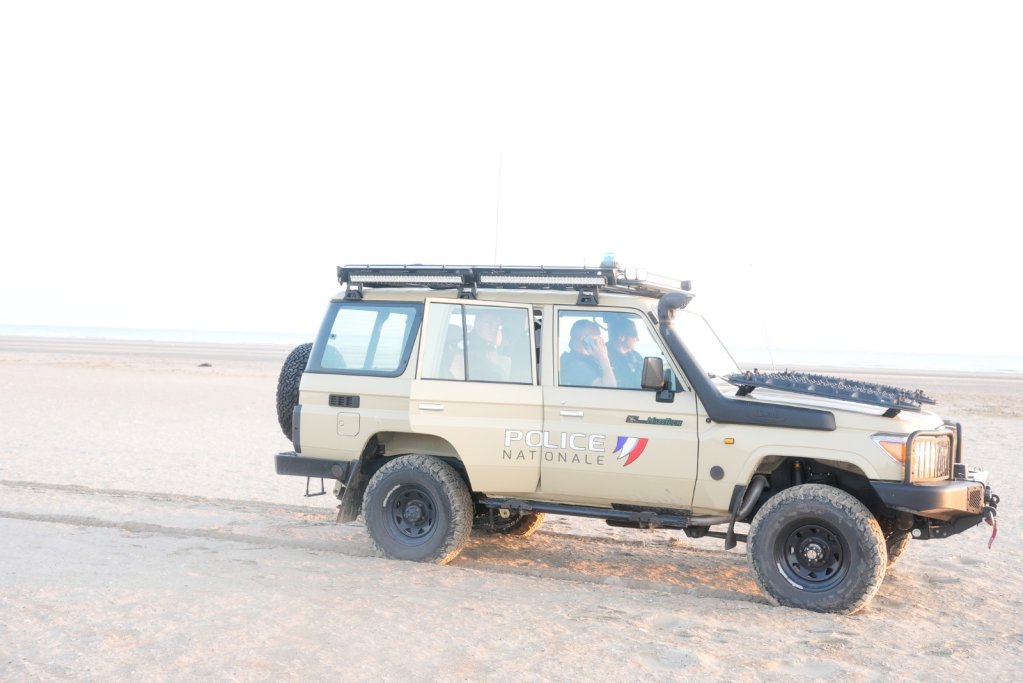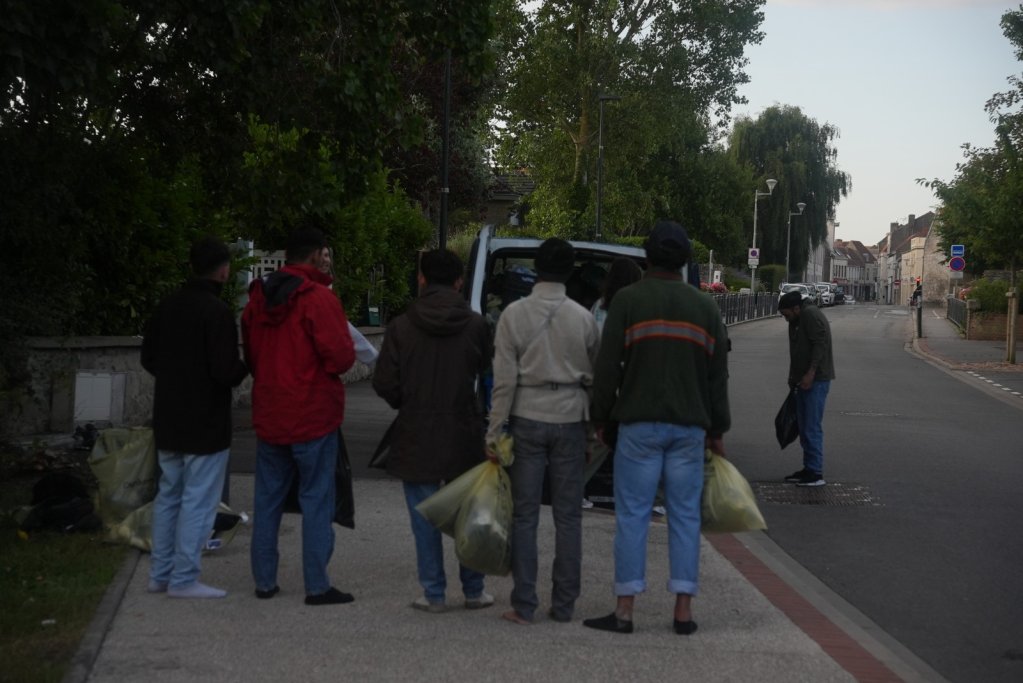InfoMigrants witnessed the July 10 departure of a small boat off the coast of Gravelines in northern France. Another group of migrants got stuck in the mud of the Aa canal the same day, prompting local firefighters to intervene. As crossings across the Channel increase sharply, France's northern coastal cities are on the frontline.
By Louis Chahuneau, special correspondent in Calais
The sun rose at 6 am over the nuclear power plant of Gravelines in northern France. Suddenly, a small boat with several dozen migrants on board appeared in the distance.
After six days without any small boat arrivals in the United Kingdom, the weather on July 10 was once again favorable for crossings: the wind strength was below 10 knots and the waves were 0.4 meters high. Yet many risks remained: a collision with another ship in the congested maritime zone, a technical breakdown, or a stampede on board are among the many threats passengers face at sea.
A dozen British journalists attempted to take pictures from the shore. They were in France covering the Franco-British summit on July 10 between Emmanuel Macron and Keir Starmer, an occasion after which the two leaders signed an agreement on cross-Channel migration.
Read Also'Four to five crossing attempts per day': Small boats overwhelm coastline from Calais to Gravelines
A French patrol vessel soon positioned itself at a safe distance behind the small boat. French ships managed by the Regional Operating Surveillance and Rescue Centres (CROSS) often escort small boats to British waters.
Smugglers are aware of this and take advantage of the principle of solidarity at sea. "Sometimes we step in when the migrants have already fallen into the water, but other times we're alerted and there's no problem. We're often tasked with search-and-rescue operations, even though that's not our core mission," said Gérard Barron, president of Société Nationale de Sauvetage en Mer (SNSM), a French voluntary organization responsible for sea rescue operations. "These boats are inherently dangerous, especially since the smugglers remove the floor [to save space], so we don't want to take any risks," added Barron.
The SNSM, which has several stations along the French coast, has seen its mission significantly modified since small boat crossings began in 2018. "Interventions involving migrant vessels now represent roughly 50 percent of our operations," said Barron.
A vessel stuck in the channel
A French police 4x4 vehicle crossed the beach at Petit-fort-Philippe on July 10, stopped for a few minutes, then headed back toward the dunes. The beach remained calm.

Yet in the city, a different scene shattered the calm of the "musicians' district," located along the Aa River, which flows through Gravelines out into the North Sea. About fifty migrants, mostly young Afghan, Iranian, or Pakistani men, attempted to launch a small boat in the Aa Canal in the early hours of the morning. Some of the migrants found themselves trapped in the mud because of the low tide. "I was covered in mud all the way up to here!" said a young Afghan man, pointing to his stomach.
The local firefighters quickly arrived to rescue them. The police came on their heels and fired tear gas into the street, waking up local residents. "I didn't realize how serious the situation was. I don't know how the people who live here manage," said an English national. A few dozen meters away, a van with volunteers from the Utopia 56 association, which had heard about the clashes, picked up five migrants. "We gave them water, tea, and cakes. Their clothes were covered in mud," said one of the volunteers.

These scenes are not uncommon. Smugglers regularly launch small boats from upstream waterways to evade the 1,200 police officers and gendarmes who patrol the 200 kilometers of beaches along the French coastline every day.
Local authorities have set up a floating barrier in the Authie River (near Fort-Mahon) and in the Canal des Dunes (in Dunkirk). Yet the city of Gravelines contests this method: "We are a port of refuge [capable of receiving vessels in distress, editor's note] and we have a nautical school here that uses the channel. In any case, migrants get around these barriers by carrying their boat the necessary few meters," said Alain Boonefaes, deputy mayor of Gravelines.
Channel crossings in flimsy inflatable boats are dangerous and often result in tragedy. The year 2024 was the deadliest recorded since 2018: 78 people died in about twenty shipwrecks, according to the Office for Combating Illicit Migrant Trafficking (OLTIM). So far this year, at least 17 people have died attempting to reach England by sea, according to the French Interior Ministry.
